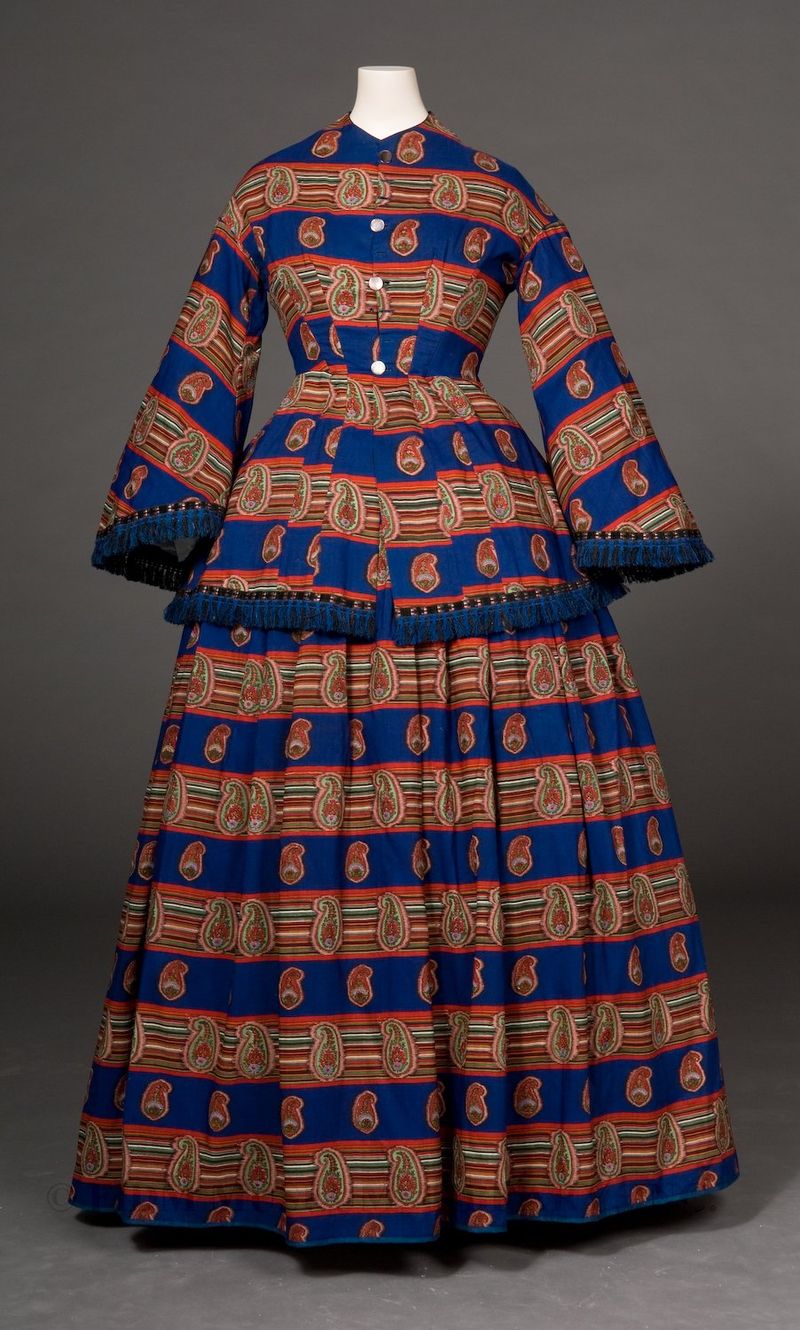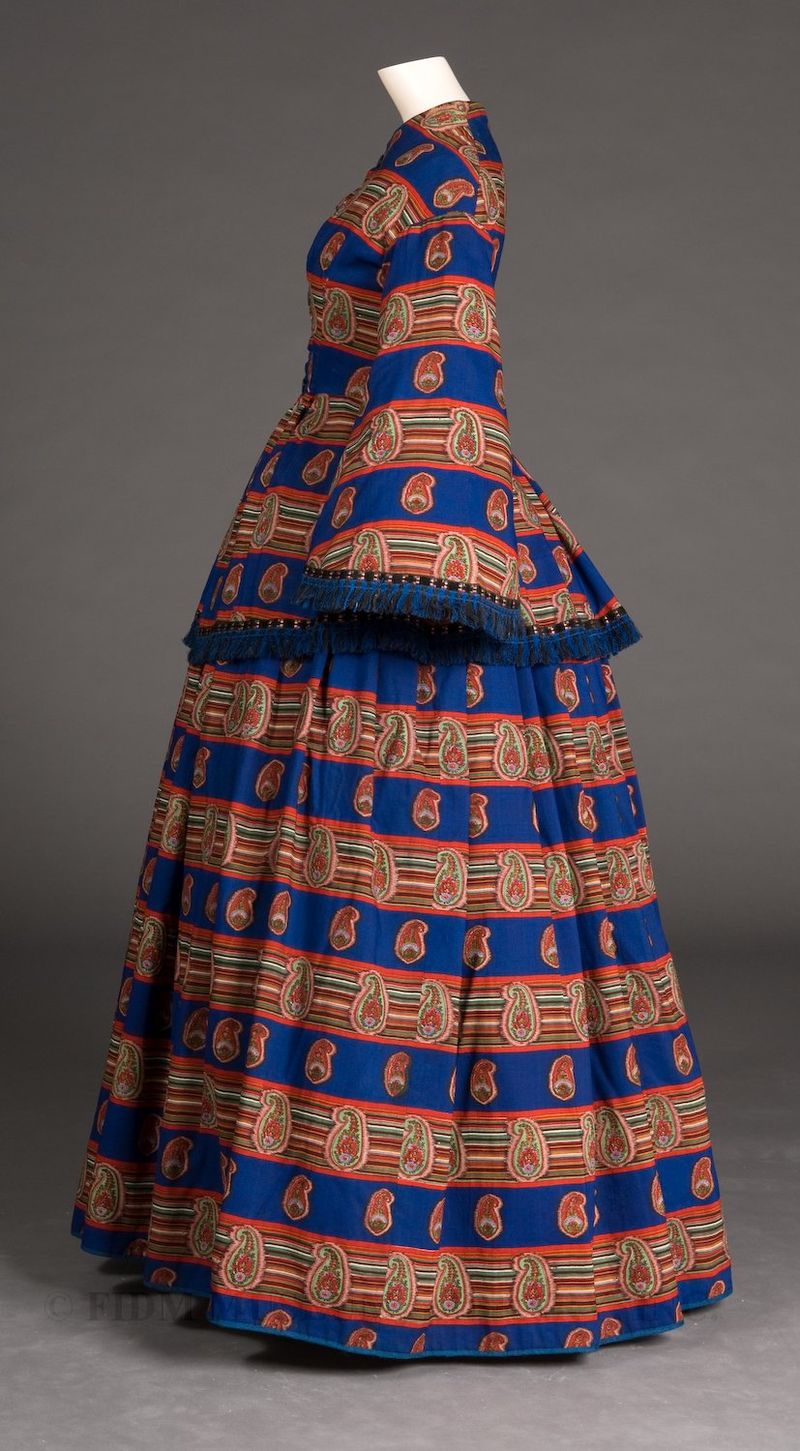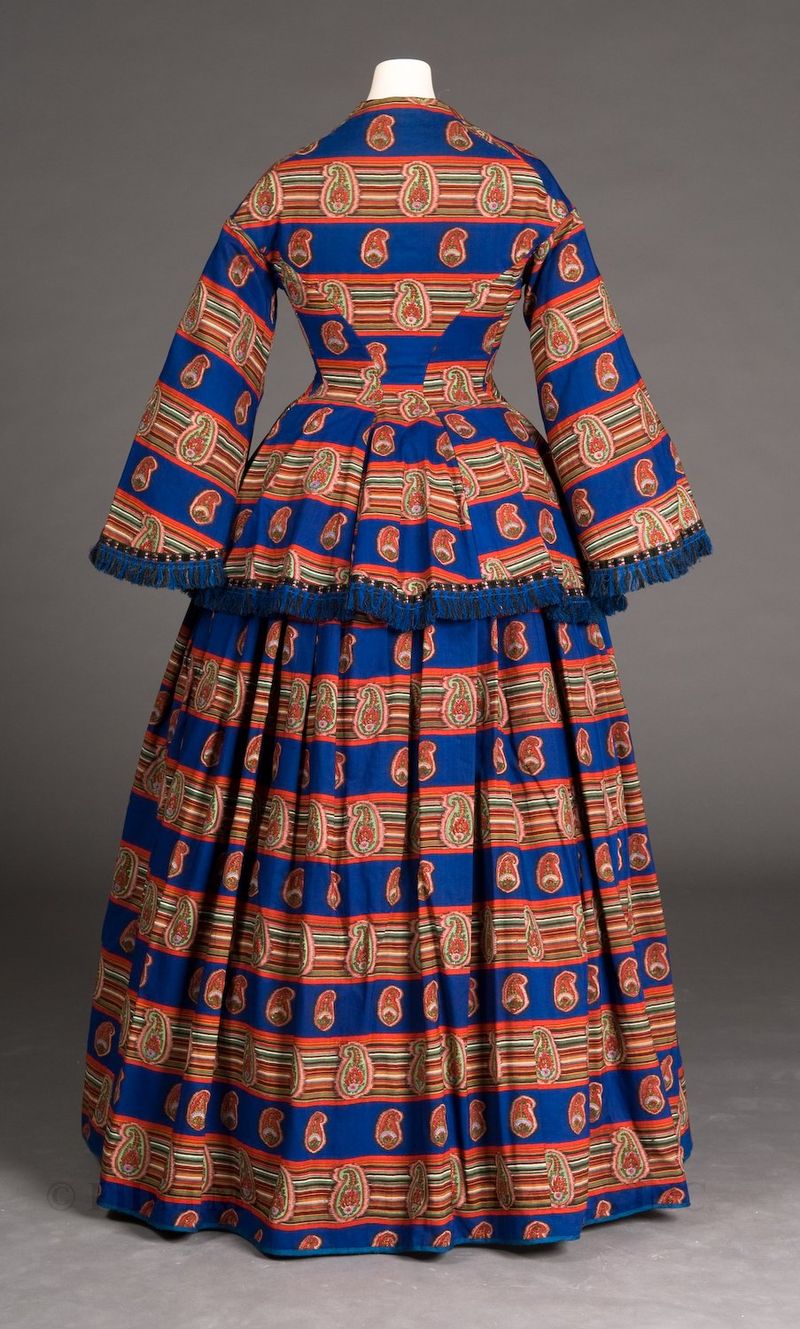Paisley day dress, 1854-56
 Two-piece day dress Printed wool challis 1854-56 Museum purchase 2004.5.40AB
Two-piece day dress Printed wool challis 1854-56 Museum purchase 2004.5.40AB
The elongated, tear-drop shaped motif decorating this vivid 1850s day dress is known as a paisley. A motif with ancient origins, the paisley is a stylized derivation of naturalistic motifs portraying leaves, floral bouquets or small bushes. Known as buta, these motifs were common on woven shawls produced first in Kashmir, and then throughout India. Beginning in the late eighteenth century, finely woven shawls bearing the buta motif were imported to Europe, rapidly becoming a favorite fashion accessory. European weavers, realizing the potential for profit, began producing their own variations on the imported shawls. The Scottish town of Paisley became a particularly important center of production, lending the motif (and the shawl) its English-language name. The motif itself was so popular that it appeared on other textiles, ultimately outliving the popularity of the paisley shawl, which faded in the 1870s.
Like the layered skirt flounces popular during the 1850s, the printed horizontal stripe and paisley pattern emphasizes the width of the skirt. Wide skirts (made even wider with the introduction of the cage crinoline) are characteristic of 1850s dress. Fashion theorists have connected this silhouette with widespread European and North American economic prosperity and industrial expansion during the mid-nineteenth century. Though it's difficult to prove or disprove this correlation, the relationship between economic prosperity and an abundant silhouette does make some sense. As you can see in the first image, the pronounced stripes made it difficult for the seamstress to match the pattern in the bodice darts and seams. Paisleys are halved and interrupted by the darts that give the bodice its shaped fit. Bright colors and large patterns are characteristic of mid-1850s dress fabrics, though were not necessarily considered tasteful. In 1854, Godey's Lady's Book complained that "not only horizontal stripes of conspicuous colors, but checks and plaids of immense size" were "another evidence of the triumph of fashion over good taste."1
The jacket-like bodice is also characteristic of 1850s fashion. Called a basque corsage or basque waist, it is tightly fitted at the bust and waist, with a flared peplum over the hips.2 It was typically paired with a matching skirt. Most often made with pagoda sleeves, the basque bodice was favored during the spring and summer months. Though usually worn with white undersleeves, pagoda sleeves were thought cool in hot weather. In August 1855, Peterson's Magazine offered its readers a pattern for the Atlantic Basque, so-called because "it will be the most fashionable basque worn at the Atlantic sea-coast this summer." Made of a lightweight white fabric with button trim, the Atlantic Basque and its matching skirt were "newly arrived from Paris," and therefore the "very latest style for summer wear." 1 Quoted in Severa, Joan L. Dressed for the Photographer Ohio: Kent State University Press, 1995: 95. 2 Both waist and corsage are nineteenth century terms for bodice.

